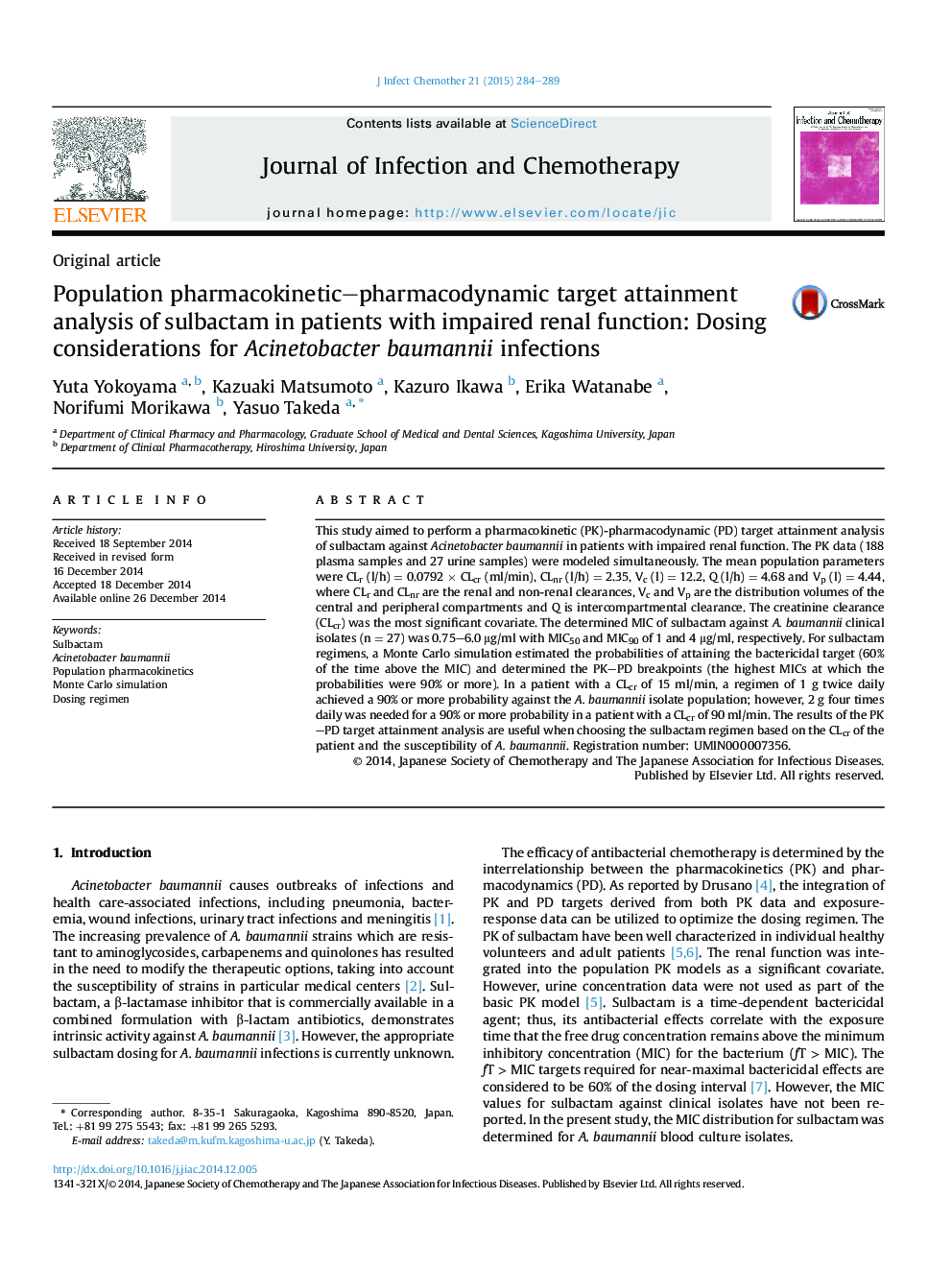| Article ID | Journal | Published Year | Pages | File Type |
|---|---|---|---|---|
| 3376880 | Journal of Infection and Chemotherapy | 2015 | 6 Pages |
This study aimed to perform a pharmacokinetic (PK)-pharmacodynamic (PD) target attainment analysis of sulbactam against Acinetobacter baumannii in patients with impaired renal function. The PK data (188 plasma samples and 27 urine samples) were modeled simultaneously. The mean population parameters were CLr (l/h) = 0.0792 × CLcr (ml/min), CLnr (l/h) = 2.35, Vc (l) = 12.2, Q (l/h) = 4.68 and Vp (l) = 4.44, where CLr and CLnr are the renal and non-renal clearances, Vc and Vp are the distribution volumes of the central and peripheral compartments and Q is intercompartmental clearance. The creatinine clearance (CLcr) was the most significant covariate. The determined MIC of sulbactam against A. baumannii clinical isolates (n = 27) was 0.75–6.0 μg/ml with MIC50 and MIC90 of 1 and 4 μg/ml, respectively. For sulbactam regimens, a Monte Carlo simulation estimated the probabilities of attaining the bactericidal target (60% of the time above the MIC) and determined the PK–PD breakpoints (the highest MICs at which the probabilities were 90% or more). In a patient with a CLcr of 15 ml/min, a regimen of 1 g twice daily achieved a 90% or more probability against the A. baumannii isolate population; however, 2 g four times daily was needed for a 90% or more probability in a patient with a CLcr of 90 ml/min. The results of the PK–PD target attainment analysis are useful when choosing the sulbactam regimen based on the CLcr of the patient and the susceptibility of A. baumannii. Registration number: UMIN000007356.
